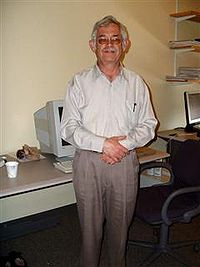Analysis of 12 billion year old light shows a change in a physical constant

An international team of astrophysicists claims to have discovered findings showing that the laws of nature have changed little during the evolution of the universe. The surprising findings challenge some of the basic assumptions in physics, and if further experiments confirm them, they may force physicists to rewrite their textbooks.
The team of researchers observed with the help of the largest telescope on earth - the Keck telescope which is stationed in Hawaii - the behavior of matter atoms in gas clouds, which are about 12 billion light years away from the earth. The observations revealed patterns of absorption of light rays, which the team members say cannot be explained in any way, except by a change in one of the basic constants of nature. This is a constant known as the "constant of the fine structure" - which is responsible for the strength exerted by the electric force on the particles, by which they are attracted to each other.
If the findings are confirmed by other methods, the researchers say that it is possible that other constants - which until now have been treated as unchanging, such as the speed of light - have also changed during the evolution of the universe. The research team was headed by Prof. John Webb from the University of New South Wales in Australia. The research findings will be published at the end of the month in the journal "Physical Review Letters".
Many scientists who did not participate in the study, and who praised its results, said that the team members had done a careful job, but were wary of rushing to adopt the findings. They question whether the discovery will stand the test of time. Many said that they prefer to wait for more evidence - before deciding whether the findings are correct.
But on the other hand, if the findings are correct, they will have enormous implications for cosmology. Dr. Edward Kolb, an astrophysicist from the Fermi National Laboratory in Chicago, who was not involved in the research, told the New York Times that the findings may not only force changes on cosmology, but also strengthen string theory, according to which there are additional, tiny dimensions in the universe and hidden from view.
A few physicists, such as Prof. Jacob Beckenstein from the Hebrew University, said that they tend to accept the results. "This group has been making observations for three years now, and these are quite serious people," said Prof. Beckenstein and added: "It's starting to look like there's something here that needs to be taken seriously."
The new research is based on observations of quasars, celestial objects that emit light with energy equal to billions of suns. As mentioned, these are observations of phenomena that occurred about 12 billion light years ago. Since then, the constant of the fine structure has increased by only one thousand percent. But such a small change is enough to shake up physics and cosmology, said Prof. John Bacall, an astrophysicist from the Institute for Advanced Studies in Princeton, in an interview with "Haaretz".
"If this is true," said Prof. Bakul, "this is a revolution in cosmology." But he added that he is currently very suspicious about the veracity of the results. According to him, the complicated analyzes required to conclude on the change may in principle cover possible mistakes. "I still wouldn't put money in betting on the results, at least not my money," he said.
In the observations, the researchers gathered information about atoms of matter in gas clouds around quasars. Some of the wavelengths in the quasar light are absorbed by the atoms. This absorption, which can be observed through telescopes from Earth, creates typical patterns, which over the years have been defined in such a precise way that today it is customary to compare them to a fingerprint. These patterns directly indicate the value of the fine structure constant.
Analyzing the results, say Prof. Webb and his colleagues, it became clear that there are small but statistically significant differences that show that the constant of the fine structure is not really constant, and that its strength has been increasing in the billions of years that have passed since the universe was created. "What we found is that statistically, there is a difference between the constant of the fine structure a long time ago, and the one that exists on Earth," says Michael Murphy from the University of New South Wales in Australia, and one of the partners in the study.
A theory developed by Prof. Bekenstein already in the early XNUMXs predicted that there would be changes in the constant. "After much thought on the matter," said Beckenstein, "I think it is possible that the observations revealed a real change."
By: Tamara Traubman. The knowledge site was until the end of 2002 part of the IOL portal from the Haaretz group
